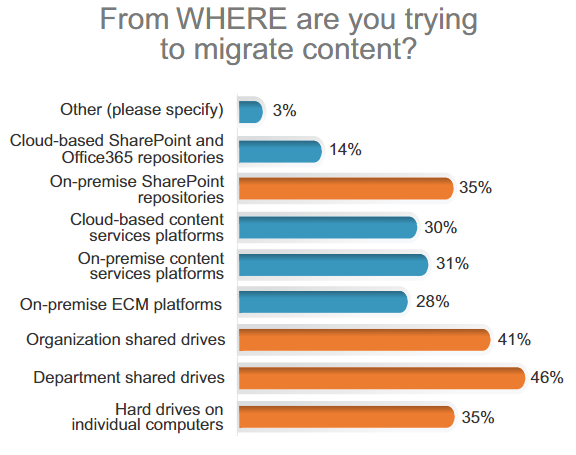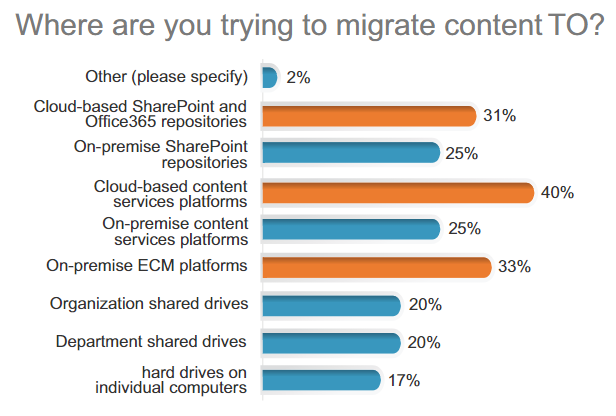This is the third excerpt from AIIM’s March survey. You can find the other three below:
- How Organizations Are Planning Out Their Digital Transformation
- How Are Organizations Handling Content Management Issues?
- Which Dept. Influences the Approval of Content Migration Projects the Most?
Earlier this year, AIIM contacted over 250 members of organizations across disciplines to find out how their digital transformation journeys were going. Continue reading for a sample of AIIM’s findings on content migration and integration, and click here for the full report.

Content migration and content integration are not necessarily mutually exclusive–most organizations seeking to modernize employ some combination–but they are different.
When thinking about a content migration project, most organizations typically have both a “from” and a “to” in mind. Organizations have four primary sources of content that they want to move away from:
- Departmental shared drives
- Organizational shared drives
- Individual shared drives, and
- On-premises SharePoint repositories.
According to the data below, they are seeking to move this content INTO:
- Cloud-based content services platforms
- On-premises ECM platforms, and
- Cloud-based Office 365 and SharePoint repositories.


A key goal in any migration project is to avoid business disruption. 61% agree that “avoiding a big bang migration” is an important priority, and 57% “don’t make a distinction between data migration and content migration.”
Content integration seeks to avoid some of the disruptive challenges associated with migration by using a platform to access and manage content without moving it. A challenge in undertaking a content integration project is that the term is still not well-understood by organizations. 44% of organizations agree that “content integration” is well-understood in their organization, while 31% disagree.
These recent content migration stats are pretty interesting: Click To TweetWhile there are myriad reasons for undertaking a content integration project, two useful questions to ask are:
- How widespread is understanding of the term “content integration?” and
- What do users see as the MOST important reason for undertaking such an initiative?

